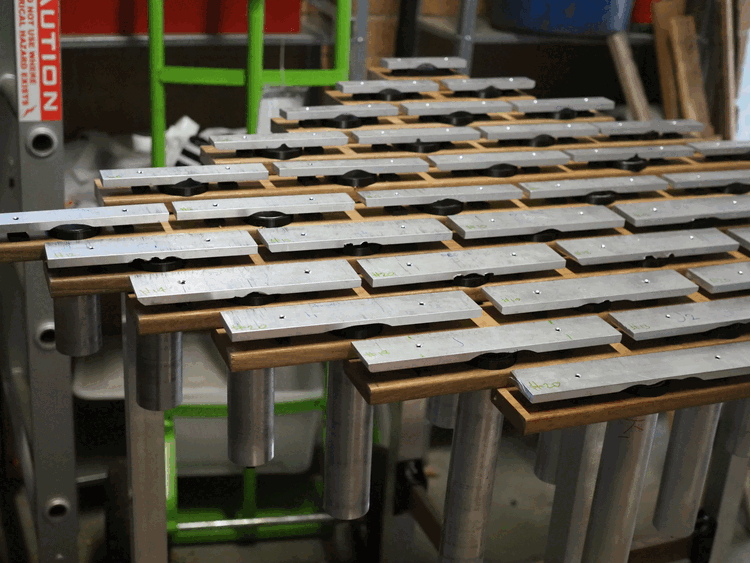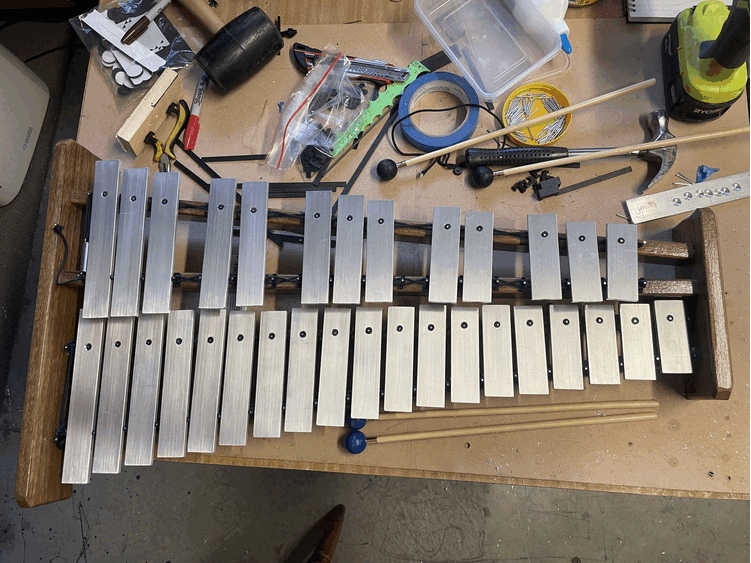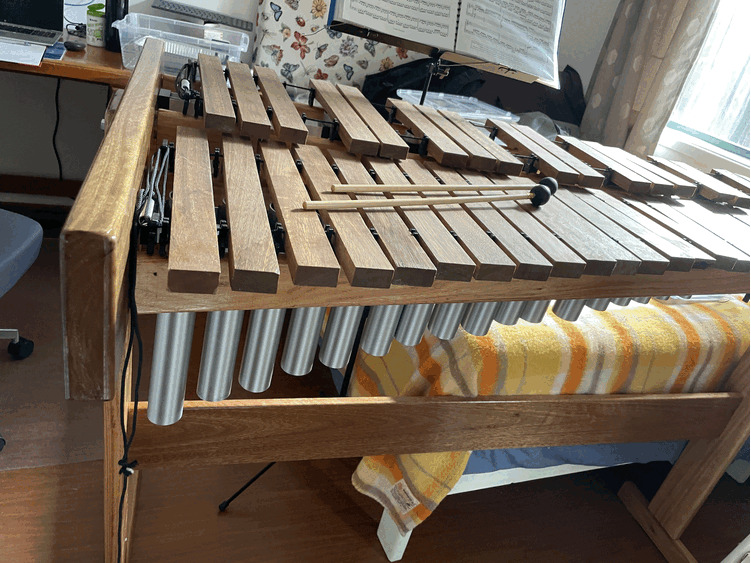I am an amateur instrument builder based in Sydney, Australia. I have built a few tuned-percussion instruments and some software tools for building them. For my professional (computer science) webpage, see amosr.amospheric.com.
Instruments
Diamond vibraphone (May 2025)
Metallophone based on Harry Partch’s diamond marimba.
Glockenspiel (December 2024)
Xylophone (August 2024)
44-key xylophone with tuned harmonics and resonators.
Software
Harmonic tuner
Web-based tuner for tuning overtones on percussion instruments.
Beam theory
Timoshenko beam theory and other xylophone-related software.


